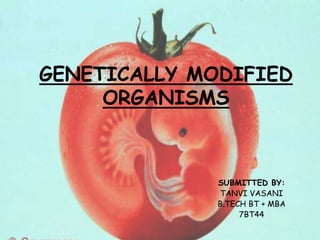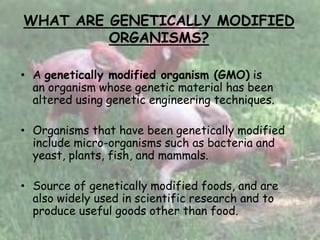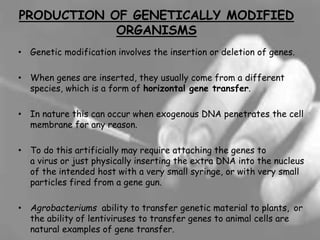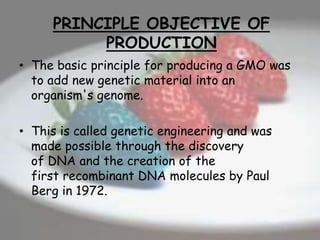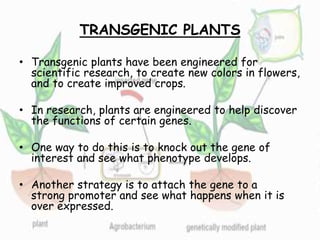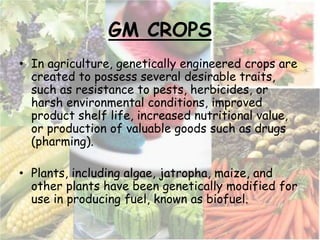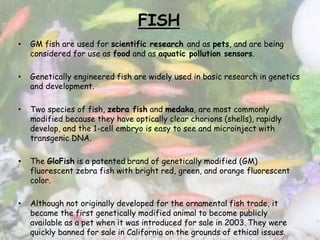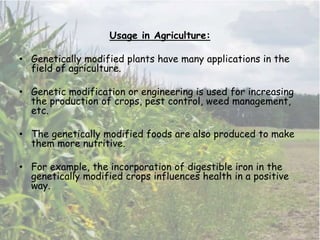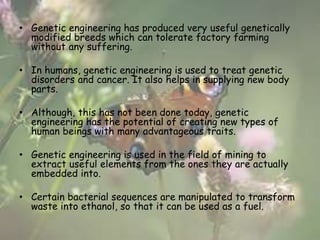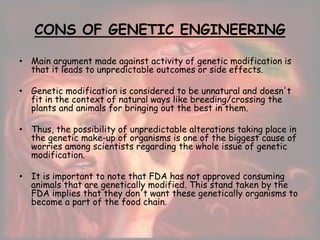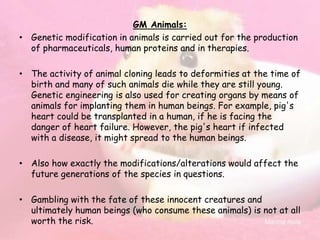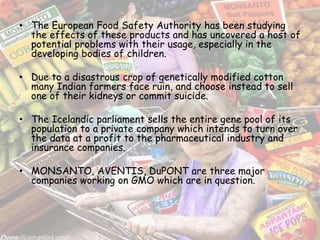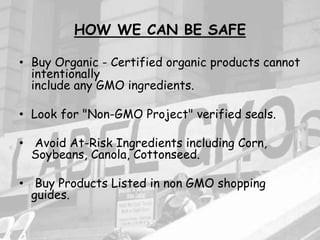This document discusses genetically modified organisms (GMOs). It defines GMOs as organisms whose genetic material has been altered through genetic engineering techniques. The document then describes how GMOs are produced through inserting or deleting genes from different species. It provides examples of genetically modified plants, microbes, mammals, and fish that have been created for various purposes like producing useful goods, scientific research, and improved crops. The document also discusses the principles of genetic engineering compared to traditional breeding and lists some pros and cons of genetic modification.
